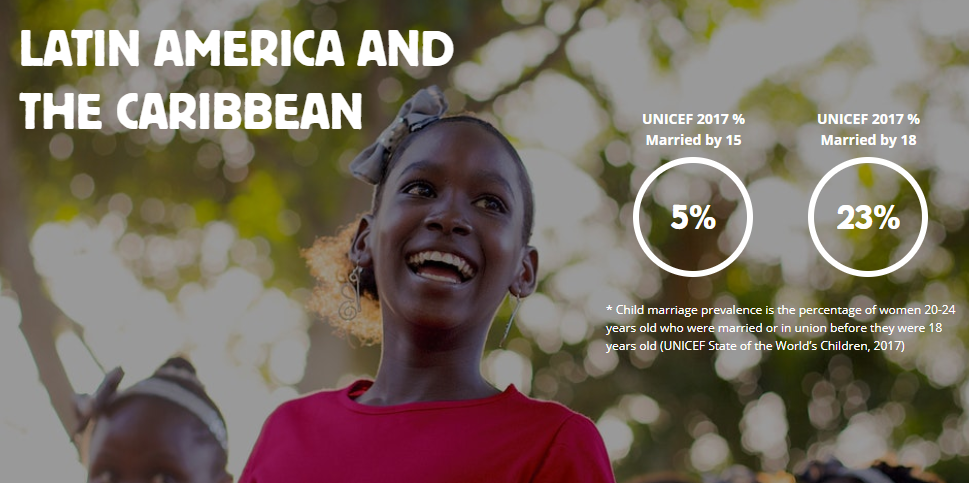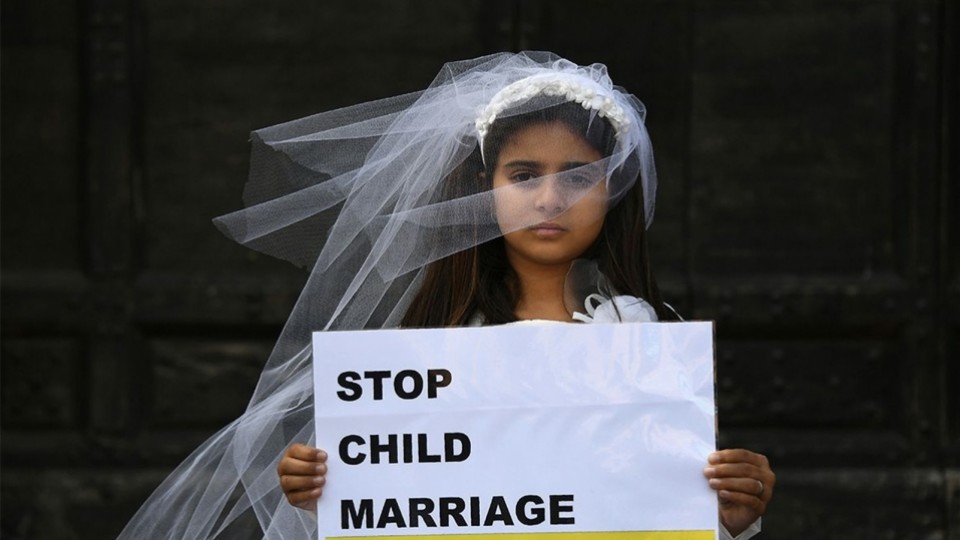
[ad name=”HTML-68″]
[wpedon id=”23995″ align=”left”]
PANAMA CITY — The Caribbean and Latin America and the Caribbean is the only part of the world where child marriages and early unions have not decreased in the last 10 years, the regional office of UNICEF, based in this city, said.
In a press release, the United Nations agency said that while in other geographical areas, especially in South Asia, the number of child marriage cases are down 50 to 30 percent during the last decade. While in the Caribbean and Latin America the number of child marriage cases has only gone down 25 percent over the same time period.
According to the report, the figures tend to be higher among indigenous girls, those living in rural areas and lower and middle-income groups, while non-formal early unions are more frequent than legal marriage.
“What we are seeing in other parts of the world is real progress to protect girls from child marriage. However, this is not the case in our region, where one in four women is married or in union before the age of 18,” said María Cristina Perceval, director of the United Nations Fund for Children (UNICEF) for the Caribbean and Latin America.
He added that minors exposed to this practice are deprived of opportunities in the medium and long term, a fact that ultimately threatens their rights.
“The increased risk of sexual violence, early maternity, school dropout, in addition to the social exclusion of their peer group, is a clear indicator that girls in the region are being, and will continue to be, left behind if we do not take action now,” Perceval added. “Some estimates reveal that 650 million women in the world were married as girls, of which one in 10 lives in Latin America and the Caribbean.”
According to the studies, if actions and accelerated investments are not taken, the region could have by 2030 the second highest prevalence of child marriage in the world, behind Sub-Saharan Africa, and ahead of South Asia, the area with the highest figures.
According to UNICEF, child marriages and early unions in the region are associated with the high rate of teenage pregnancies, the second in the world, and the risk of sexual violence, in addition to gender inequality.
Nearly one in four girls across Latin America are married off before the age of 18. Due to a lack of data in many countries, however, the scope of child marriage is not fully known.
Current estimates vary widely between and within countries and among rural and indigenous groups.
The highest prevalence rates can be observed in the Dominican Republic (36 percent), Brazil (36 percent), Mexico (26 percent) and in Central American countries, such as Nicaragua (41 percent), Honduras (34 percent) and Guatemala (30 percent).
Common factors such as poverty, social norms, gender roles and relationships, beliefs and loopholes in national laws have led to the slackness in the region.
“In the region, the equality of girls is limited by the impact of early motherhood, violence and limited life opportunities. We cannot keep our eyes closed to a lost potential and forgotten rights,” hence the urgent call to put an end to these practices, said Perceval.

